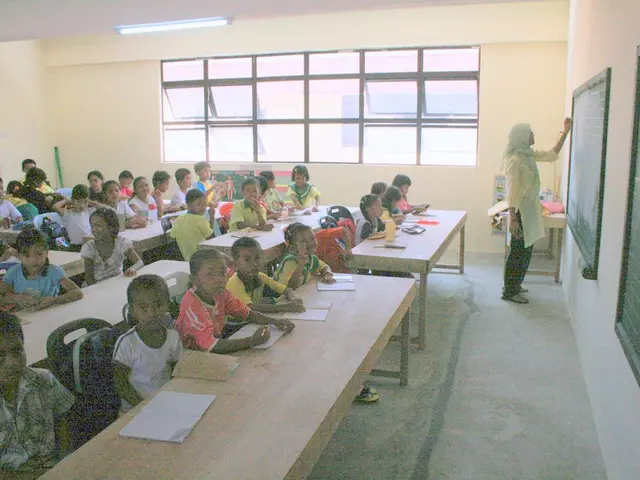Genetic Modification Likely Involves Tinkering with Essential DNA Structure
In the realm of scientific advancement, genetic alteration has emerged as a transformative force, offering the potential to revolutionise human health, agriculture, and the environment. This article explores the various aspects of genetic alteration, its applications, and the challenges that come with this groundbreaking technology.
At its core, genetic alteration involves changing the DNA sequence of an organism, either naturally through mutations or artificially through gene editing techniques like CRISPR. In the human body, these changes can directly influence health by altering which proteins are made or how genes are expressed. For instance, genetic mutations may affect immune responses, as seen in the recently discovered evolutionary mutation that weakens immune effectiveness against solid tumors.
In agriculture, genetic modification has led to the creation of crops with enhanced pest resistance, improved drought tolerance, and higher yields. These genetically modified organisms (GMOs) can reduce the need for chemical pesticides, thus lowering farmers’ exposure to harmful substances and conserving environmental resources. However, the overuse of certain herbicides linked to resistant crop strains can lead to the development of herbicide-resistant weeds.
The environmental impact of genetic alteration is complex. On one hand, GM crops have contributed to pesticide reduction, decreased greenhouse gas emissions, and reduced fuel consumption. On the other hand, the spread of genetically modified crops has sometimes caused ecosystem imbalances and biodiversity loss. Ethical and safety concerns also remain regarding the use of gene drives and the broader ecological consequences of genetic alterations.
In medicine, genetic alteration is used to improve health outcomes, enhance crop yields, and explore potential solutions for genetic disorders. Regenerative medicine could use genetic engineering to regrow damaged tissues and organs, while nutritional improvements are made through fortified foods like golden rice enriched with vitamin A.
However, genetic alteration also raises ethical dilemmas. Human genetic engineering, for example, raises concerns about modifying human embryos and the potential for "designer babies." Additionally, patenting of genetic sequences presents ethical issues regarding corporations owning genetically modified genes.
Different countries have varying regulations concerning genetic modification, with the European Union having stricter regulations and labeling requirements for GMOs. In the United States, the FDA, USDA, and EPA oversee genetic engineering in food, medicine, and the environment.
As we delve deeper into the world of genetic alteration, it's crucial to remember that while this technology holds significant promise, it also comes with risks. Unintended consequences, such as the emergence of resistant pests and weeds, and unforeseen effects on human health necessitate careful regulation and ongoing research.
In conclusion, genetic alteration offers a promising future for improving human health outcomes, agricultural productivity, and offering potential environmental benefits. Yet, these advances come with risks, necessitating careful regulation and ongoing research to ensure a safe and ethical use of this groundbreaking technology.
- The innovation of gene editing techniques, such as CRISPR, allows for the direct alteration of genes in the human body, potentially impacting health by influencing protein production or gene expression.
- In the realm of space and astronomy, the understanding of genetic alteration could play a role in future long-term space missions, as it may help in selecting astronauts with certain genetic adaptations that could enhance their ability to withstand space conditions.
- The integration of genetic alteration in education and self-development can lead to a deeper understanding of science, enabling individuals to grasp complex biological concepts and make informed decisions about genetic technologies.
- The culture of a society can influence its stance on controversial applications of genetic alteration, such as human gene editing, as ethical and societal considerations often shape public policy.
- The field of science continues to explore the unknown territory of genetic alteration, uncovering novel applications in medical conditions, Space exploration, culture, technology, and agriculture, while concurrently addressing the associated challenges and ethical dilemmas.




